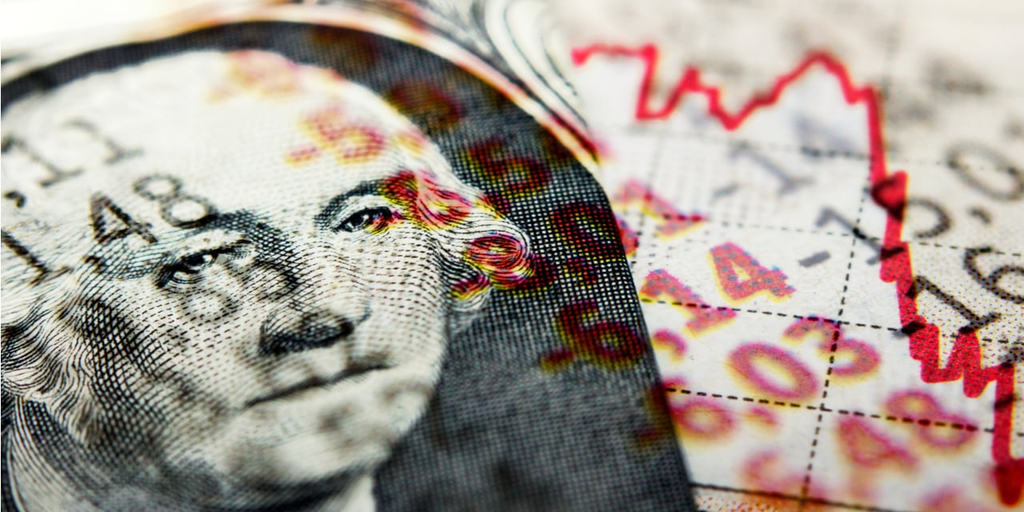
Bitcoin dropped as consumer prices rose more than expected last month, indicating the pace of inflation accelerated in January after running hotter over the previous three months.
The Consumer Price Index (CPI) rose 3% in the 12 months through January, the Bureau of Labor Statistics (BLS) said Wednesday. Economists expected the index, which tracks price changes across a broad range of goods and services, to show a 2.9% annual increase.
In September, annual inflation had cooled to 2.4%, per the BLS.
“Fed rate cuts are off the table for the time being,” Grayscale’s Head of Research Zach Pandl told Decrypt. “This is going to be unhelpful for Bitcoin over the short term as markets price out Fed rate cuts even further.”
The Bitcoin price dropped to $94,250 on the back of Wednesday’s CPI print, diving 2.3% in 15 minutes. The price of Ethereum and Solana also fell to $2,600 and $193, respectively, according to CoinGecko data.
Stripping out volatile food and energy prices, so-called core inflation ticked up to to 3.3% in January after showing a 3.2% increase in the 12 months through December. Used to gauge underlying inflation trends, the measure came in slightly hotter economists expected.
Pandl said that January’s report may be discounted to some degree because businesses typically update their prices at the beginning of the new year, a phenomenon known as the January effect that can make it difficult to adjust inflation data for seasonal trends.Still, core inflation rose 5.5% on an annualized basis in January, representing the largest increase since April 2023. Pandl said Wednesday’s print was so hot, it may contribute to speculation of Fed rake hikes this year.
Bitcoin’s price boomed as the Federal Reserve’s benchmark interest rate was lowered last year from a 23-year high to a target range of 4.25% to 4.50%. At their latest policy meeting, however, Fed officials decided not to cut, standing by a relatively cautious stance last month.
Inflation has fallen markedly from a four-decade high of 9.1% in June 2022, but Trump’s trade war represents a wild card as the Fed’s progress on taming inflation has stalled, according to David Hernandez, a Crypto Investment Specialist at 21Shares.
“They’ve made notable progress in the past couple of years, that progress has been stagnant for the past several months,” he told Decrypt. “The Fed’s fight against inflation is far from over, and with Trump’s tariffs, Powell and the Fed will have to carefully navigate through the effects of new policies as the dust settles over the coming months.”
During the Fed’s December policy meeting, officials signaled that they are monitoring potential shifts in trade and immigration policy as a potential barrier to restoring 2% price stability.
Speaking yesterday before Congress for the first time since President Donald Trump’s inauguration, Fed Chair Jerome Powell was peppered on Tuesday with questions regarding Trump’s trade war.
“It’s not the Fed’s job to make or comment on tariff policy,” Powell said. “[The Fed’s job] is to try to react to it in a thoughtful, sensible way.”
Powell maintained that the U.S. central bank is prepared to respond if inflation cools or the labor market weakens. But the economy remains in solid shape, he said, and the Fed does “not need to be in a hurry to adjust” interest rates, given last year’s cuts.
Less than two weeks ago, the Commerce Department reported an increase in its Personal Consumption Expenditures (PCE) price index—indicating the Fed’s preferred inflation gauge rose 2.6% annually in December, accelerating from 2.4% the month before.
Risk assets like stocks and crypto tend to thrive amid lower interest rates, which encourage borrowing and spending. At the same time, they can contribute to inflation.
On Wednesday, Trump said that “interest rates should be lowered” on Truth Social, saying that they would “go hand in hand with upcoming Tariffs!!!”
If the Fed were to raise the prospect of rate hikes this year, that could increase tensions between the Fed and the White House further, Pandl said, describing it as “something that certainly could matter to markets, including Bitcoin.”If the tension starts to look like a potential threat to the Fed’s independence, Pandly said it may ultimately drive investors to Bitcoin and gold as government-resistant stores of value.
At this point, market participants have grown doubtful that the Fed will cut rates very much at all in 2025.
Traders on Wednesday penciled in a more than 50% chance that the Fed delivers just one 25-basis-point rate cut this year, or none at all, according to CME FedWatch.
Still, the Fed won’t conduct its next policy meeting until mid-March. That leaves plenty of time for more data between Wednesday’s inflation print and Fed officials’ next move.
Edited by Stacy Elliott.
Daily Debrief Newsletter
Start every day with the top news stories right now, plus original features, a podcast, videos and more.
https://decrypt.co/305573/bitcoin-ethereum-inflation-january








